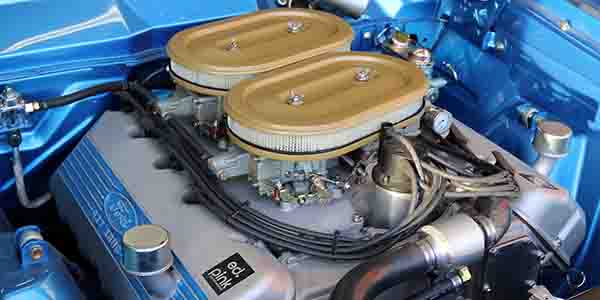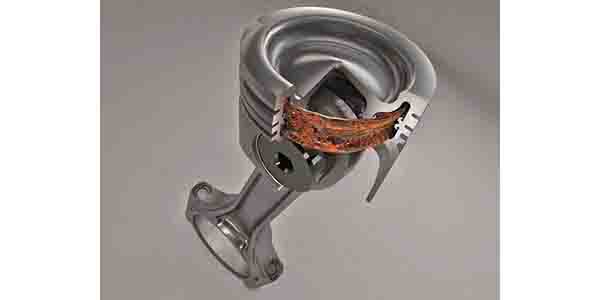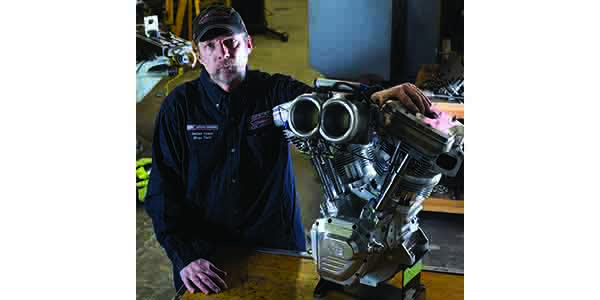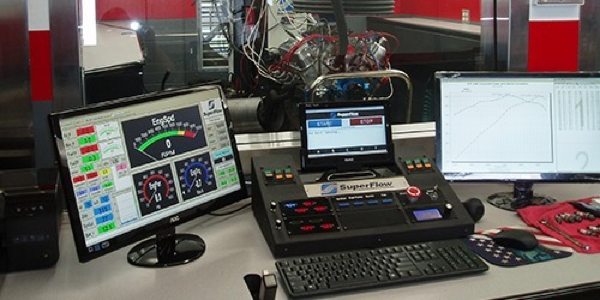Making New and Improved Vintage Motorcycle Engines
Bruce G. Argetsinger of Branford, CT, is a tool and die maker who found a niche manufacturing racing engine parts for vintage Harley and Indian motorcycles. His motivation for manufacturing such items grew out of his own motorcycle-racing career and explains the trade name that Bruce uses – EnfieldRacing.com. He operates Enfield as a division
The Science Behind Wet Sump Oil Pumps & Oiling System Upgrades
All automotive internal combustion engines are equipped with some type of pressurized oiling system. Oil lubrication is essential for reducing friction, preventing wear and cooling vital engine components. Pumping oil to the main and rod bearings creates a friction-reducing hydrodynamic film between the bearings and crank that allows the crank to spin with minimal friction.
Understanding Cylinder Blow-by
While this industry continually runs on tighter and tighter engine clearances, in today’s world of engine building, no one has yet to figure out how to run engine parts on zero clearance. There has to be some amount of space available or an engine simply won’t run. Thus, when it comes to pistons and piston
Sleeves & Liners – Selection and Installation
Engine sleeves have long been used to repair worn or cracked cylinders that can’t be bored to oversize. Installing a sleeve can save a block that would otherwise be unrebuildable. But sleeves can also be used to strengthen cylinders, especially in performance engines that are being pushed way beyond their original design tolerances. A prime
The Fuel Injection Phenomenon – What Normally (Naturally) Aspirated Engine Builders Need to Know
On a basic level, fuel injection just looks really cool. The intake on a fuel injected power plant is the most visible part of the engine while the ram tubes, injectors and fuel lines make it look intricately sleek. With recent developments, simple mechanical fuel injection (MFI) is also useful for a level of complex
The BIG chill – Cryogenic Metal Treatment Benefits May Not Be Visible But Are Real
What is the purpose behind deep freezing engine parts (and other components)? Though its roots go back to the 1800s, the cryogenic craze started about 20-plus years ago when news was that some Pro Stock teams were “freezing” engine parts. The only answer given when asked “why” was that the cold temperatures somehow moved the
Diesel Racing Continues To Grow in 2016
It was a busy year for all of us at DIESEL Motorsports and for supporters and fans of our association. We hosted eight regional events along with 50-plus affiliate events across the United States during 2016. Starting in Nebraska in April and ending in Missouri in October, DIESEL Motorsports held diesel drag racing, sled pulling,
Are Carbs Making You Look Bad? – The Best Engine Build Means Nothing If It Doesn’t Run Right
It’s hard to believe that we’re still talking about carburetors in 2017, especially since the last vehicle sold in America with a carburetor was more than 25 years ago. This seemingly rudimentary device has been fueling the internal combustion engine since its inception more than 100 years ago.

10 Things You Might Not Know (But Should) About Pistons and Rings
We asked various aftermarket piston and ring suppliers what type of questions commonly arise when a customer is buying a set of pistons or rings for an engine.

V-Twin Validation – How a Harley Discussion Changed an Engine Builder’s Fortunes
What we will be covering here is a general overview of the most common practices and procedures we use in servicing and rebuilding Harley-Davidson engines and things that are unique to V-twin.

Dyno Decisions – Your Test Requirements Should Dictate Your Correct Dyno
Most engine builders either have an engine dyno or rent the use of an engine dyno at someone else’s facility. The purpose of running an engine on the dyno is primarily a way of “protecting the investment.” This not only insures the workmanship of the engine builder but also the interest of the customer.

Making the Plunge into CNC
Computer Numeric Controlled (CNC) machines are changing the way many machine shops build engines. CNC provides a level of automation, sophistication and accuracy that manually operated machines can’t match. CNC also has the potential to dramatically increase productivity and profitability.
